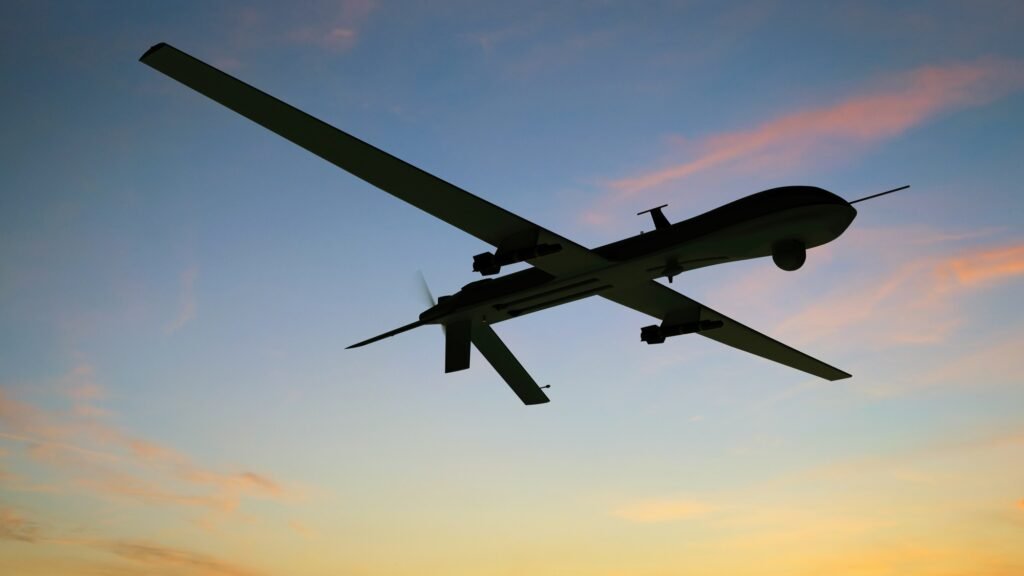By Major (R) Haroon Rasheed – Defence & Strategic Analyst
Recent reports circulating across Indian media outlets have raised significant concern over Pakistan’s alleged acquisition of advanced Turkish weapons systems worth approximately $800 million. According to these reports, Pakistan is in the final stages of procuring a comprehensive high-tech weapons package from Türkiye, including Baykar AKINCI combat drones, TBT-2 precision-guided munitions, and the KEMANKEŞ air-launched cruise missile.
While Indian analysts and strategic circles are portraying this as an aggressive tilt in Pakistan’s defense posture, the broader picture suggests a more nuanced strategic recalibration by Pakistan in response to the rapidly changing regional security landscape—particularly in the aftermath of recent India-Pakistan skirmishes and the intensifying arms race in South Asia.
Bomb threats hit over 45 Delhi schools, spark panic among students and parents
World masters snooker C’ship: Pakistan’s Asif qualifies for final
2026 world cup asian qualifiers: Key matches scheduled in Asia’s 4th round
For more such Opinions & Blogs, click here.
What Pakistan Is Allegedly Acquiring
According to Indian media sources such as The Economic Times and India Today, the $800 million weapons deal between Pakistan and Türkiye includes:
- AKINCI UCAV (Unmanned Combat Aerial Vehicle): A high-end strategic drone capable of carrying a variety of precision munitions. With a range of up to 7,500 km and payload of 1,350 kg, the AKINCI is considered one of the most powerful drones outside of the U.S. and China.
- TBT-2 Smart Bombs: These are GPS-guided glide bombs, offering high accuracy with standoff range, reducing pilot exposure during combat operations.
- KEMANKEŞ Cruise Missiles: An air-launched cruise missile capable of autonomous navigation, real-time image processing, and striking targets with surgical precision even in GPS-denied environments.
The Strategic Context: Renewed Pakistan-India Tensions
The timing of this procurement is crucial and has added a layer of nervousness in New Delhi. In recent months, tensions between India and Pakistan have seen a subtle resurgence—both along the Line of Control (LoC) and in strategic domains. This follows:
Operation Sindoor (unconfirmed by official Indian sources but widely discussed in Pakistani defense circles), where Pakistan reportedly used FATAH-1/2 missiles and SH-15 howitzers to inflict considerable damage on Indian forward posts and supply convoys.
India’s Weakness in C-RAM Defense Systems: The Indian Vice Chief of Army Staff recently urged the government to urgently acquire C-RAM systems to defend against precision artillery and drone attacks—acknowledging a significant vulnerability in India’s layered air defense.
COAS, Libyan Commander discuss regional dynamics
Security forces arrest suspected suicide bombers
21st death anniversary of comedian Albela observed
PAF’s Tactical Edge
Pakistani Air Force’s ability to integrate new platforms like Turkish drones alongside Chinese aircraft (JF-17 Block-III, J-10C) creates a formidable air combat and ISR (Intelligence, Surveillance, Reconnaissance) ecosystem.
Why Indian Media Is Worried
The Indian media’s coverage is not just based on speculation—it reflects a deeper concern about Pakistan’s growing asymmetric capabilities. The AKINCI drone in particular has already proven its effectiveness in multiple theaters (Libya, Azerbaijan, Syria) and gives Pakistan strategic reach far beyond its borders.
These systems would allow Pakistan to:
- Strike high-value targets deep inside enemy territory with minimal risk.
- Neutralize air defense and radar installations before manned aircraft enter the combat zone.
- Conduct real-time surveillance and ISR missions across the LoC and beyond.
- Offset India’s numerical advantage in conventional warfare through precision-guided, low-cost drone warfare.
Afghanistan Hosts Trilateral Consultation with Pakistan and Uzbekistan
Over 20 schools in New Delhi receive bomb threats via emails
Farooq Abdullah reiterates demand for IOJK’s statehood restoration
Türkiye-Pakistan Strategic Nexus
This arms deal, if confirmed, represents more than just a buyer-seller relationship. It reflects the growing military-industrial cooperation between Pakistan and Türkiye—a relationship that has blossomed in recent years. From naval corvettes (MILGEM project) to joint training and now advanced drone and missile transfers, the Ankara-Islamabad axis is emerging as a critical pillar in Pakistan’s military modernization program.
Conclusion: A Calculated Deterrence or Escalation Trigger?
For Pakistan, acquiring advanced UCAVs and precision weapons is a rational response to evolving regional threats, especially in light of India’s rapid militarization and aggressive posturing. However, Indian media framing this development as a provocation rather than deterrence underscores a deeper anxiety in New Delhi about the shifting balance of power.
While both nations publicly advocate for peace and dialogue, their defense procurements tell a different story. Pakistan’s embrace of Turkish combat tech is a strategic move to level the playing field—not to escalate, but to ensure credible deterrence in an increasingly hostile environment.
If anything, these developments should push both sides toward serious dialogue on arms control and conflict prevention. Otherwise, the region risks slipping into a high-tech, low-threshold arms race—where drones and cruise missiles may replace diplomacy.
For more such Opinions & Blogs, click here.
Kashmiris to mark Accession to Pakistan Day on Saturday
Andre Russell announces international cricket retirement
White House says no Trump visit scheduled to Pakistan ‘at this time’
US deported 1563 Indians since January this year
Not aware of Trump’s visit’: Pakistan foreign office rejects Geo Tv report
Major (R) Haroon Rasheed is a retired officer of the Pakistan Army and a defense analyst focusing on South Asian strategic affairs and emerging military technologies.
Stay tuned to Baaghi TV for more. Download our app for the latest news, updates & interesting content!






